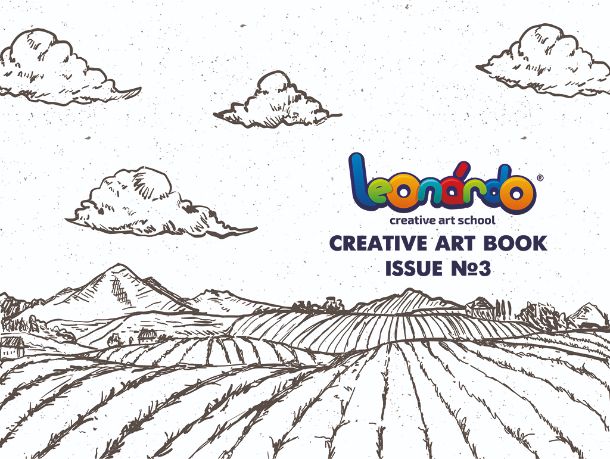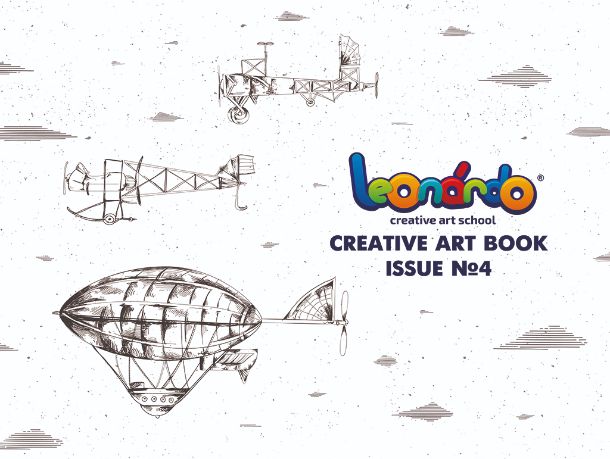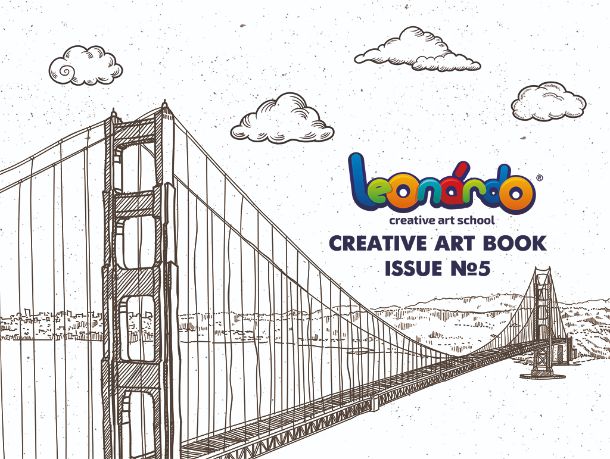
COURSES
The five main courses of Leonardo
LEONARDO COURSE No. 1
"FLIGHT"

Each Course of LEONARDO ART SCHOOL creates new level of holistic creative development of each student.
The course "FLIGHT" is for beginners of LEONARDO ART SCHOOL.
The course is focused on its preservation and development of figurative thinking, the development of divergent thinking and the disclosure of internal creative potential.
IMAGE is a view, appearance, as well as the result of reflection of objects and phenomena of the material world in the mind, this is a visual representation.
FIGURATIVE THINKING is the process of reflecting reality in the form of images (visual, sound, olfactory, tactile ...), in contrast to logical thinking, when reality is reflected in the form of judgments and concepts, and in contrast to visual-effective thinking, which involves practical actions with items. Operating with images of objects helps to visualize and understand the situation or task, and then quickly and correctly solve it. Everyone needs imaginative thinking: designers, artists, writers, inventors, scientists, marketers, entrepreneurs...
Art lessons of Leonardo school work on the development of figurative thinking and its transition to a higher level - "creating a new one" - a special art situation when a student completes an image according to his/her understanding, but not to ready-made templates.
The content of the course "FLIGHT":
- Basic concepts of academic drawing: color, tone, proportions, chiaroscuro, space, composition, line, spot, theory of shadows, rules and laws of perspective, volume, rhythm;
- drawing, graphics, illustration (pencil, gouache, pastel, charcoal);
- drawing with fingers, palms, unexpected means;
- applications from diversified paper, cardboard for decorating holidays and entertainment, souvenirs, etc.
Thinking in images is necessary:
- for solving any problems, which helps to visualize almost any situation and find the solution easily;
- for the formation of moral and aesthetic responsiveness to the beautiful and the ugly in life and in art;
- to develop visibility in teaching children;
- for the development of figurative memory and figurative composition.
LEONARDO COURSE No. 2
"FANTASY and IMAGINATION"

The real test of the human mind is the ability to create something new, something that has never existed before. However, such abilities are found extremely rarely in people, because comprehensive schools do not develop them at all. In fact, creativity is the most demanding resource of the modern economy!
Creatively gifted people are in demand in any sphere (science, manufacturing, business, advertising, medicine, fashion, education, culture, etc.). Scientific inventions, new goods or services, successful enterprises (companies, projects) are all the product of the activity of creative people who are able to think outside the box, find new approaches and unusual solutions in any situation.
The ability for creativity, fantasy, non-standard manifestations of one's personality must be nurtured from an early age. The period from 6 to 17 years old is the period of maximum neuroplasticity of the brain, everything that a child studies at this age will be “assigned” forever!
At the lessons of LEONARDO ART SCHOOL of the course "FANTASY AND IMAGINATION», spatial and figurative thinking is developed the ability to see and represent the world as three-dimensional, color, changing in time and space. A person can imagine what the life is and even what it is not in life.
Students learn a lot of exciting and useful things: pencil drawing, oil painting, paperwork and embroidery, they can learn how to sew fluffy toys, how to be artists and perform as actors or be the owner of the theater. A flight of fancy is appropriate here and encouraged!
LEONARDO COURSE No. 3
"WORLD of MASTERPIECES"
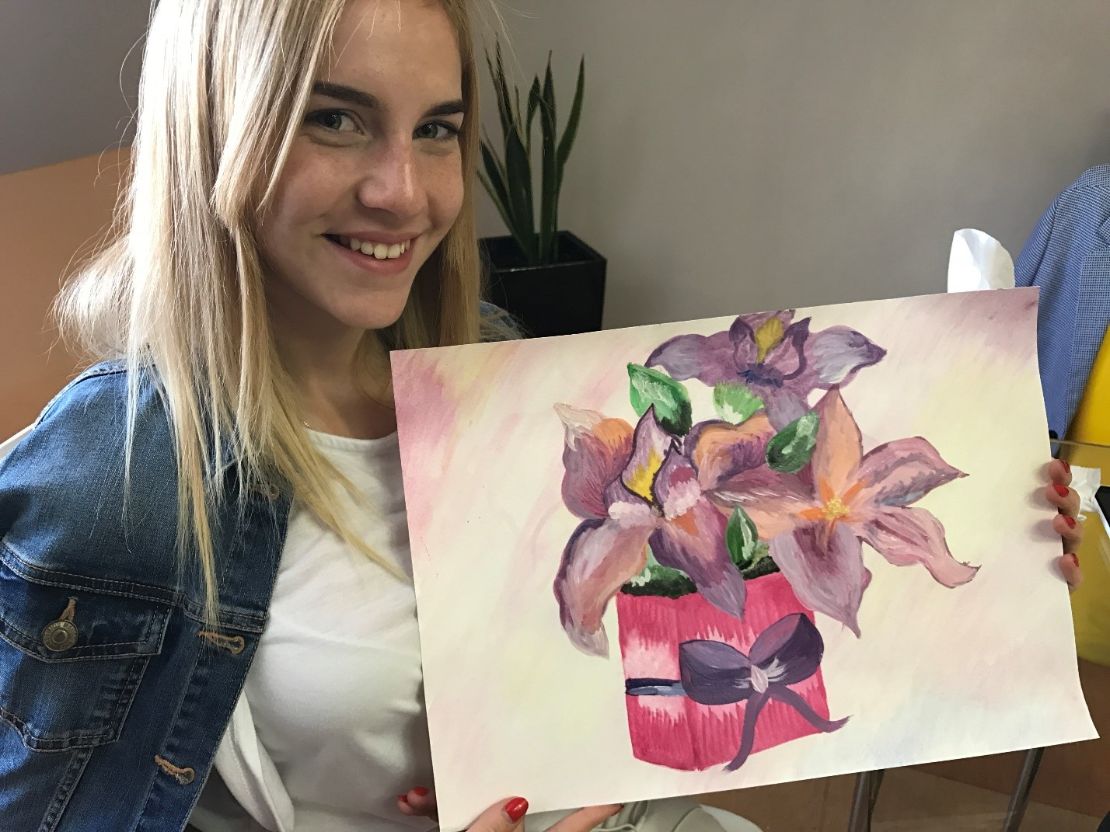
The course brings together a brief history of art, with a selection of the great names and most prominent genres/styles in art history, like Leonardo Da Vinci, Michelangelo, Rembrandt, Wag Gogh, Picasso, Salvador Dali, Kandinsky, etc. Our students will learn about their drawing techniques and understand what these people are famous for and what they have given to the world.
Greatest Geniuses. Bright personalities. What unites unsurpassed masters? These geniuses have two main differences: they created new things in art (themes, techniques, accents) and a new professional method of teaching fine arts in their workshops.
In order to master the works of the great masters and learn a brief history of the art, the student needs to spend a lot of time studying the techniques and styles of the artists. The student must learn to skillfully grind and mix paints. Gradually, the student begins to engage directly in drawing and painting, not just reproducing the works of great teachers, but reworking, thinking out with new metaphors.
The great Donatello, when was asked what the best method of teaching art was, always answered: "In the art of making and remaking means to improve." This is the rule we follow by, while studying the handwriting of famous masters on the course LEONARDO No. 3.
During "WORLD of MASTERPIECES" course, students study graphics, painting and other forms of art through the perception of great masters.
The main thing is getting a triple result:
- TO SEE WHOLELY: studying world art history in 1 course, which is already priceless!
- TO SEE METHODOLOGICALLY: the study of the techniques and genres of the greatest masters, which greatly diversifies the student's vision,
- TO SEE MORE and FURTHER: creating a new vision of masterpieces through the methods of "remaking", "finishing". This is already a level of high creativity!
LEONARDO COURSE No. 4
"SKETCHING"
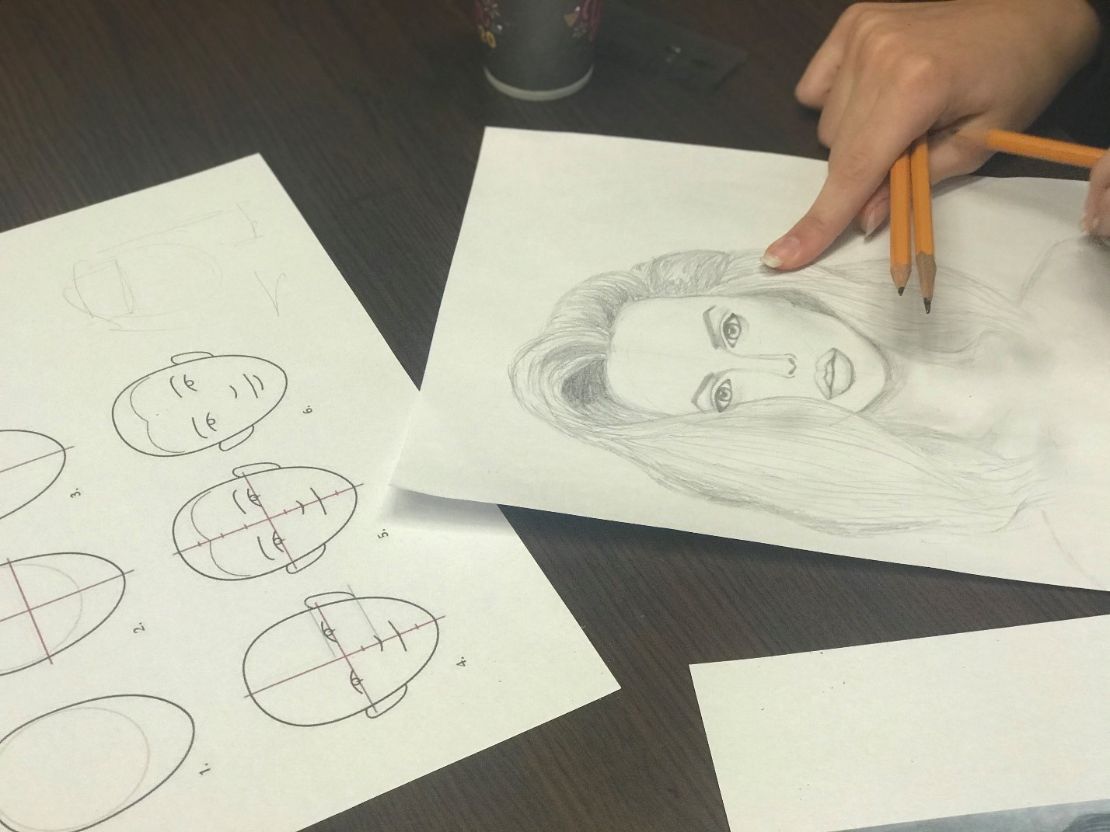
LEONARDO course #4 is about sketching and doodling techniques, on which students learn to make the great out of the ordinary, the serious out of the funny, and the funny out of the serious.
A doodle is a drawing made while a person's attention is otherwise occupied. Doodles are simple drawings that can have concrete representational meaning or may just be composed of random and abstract lines or shapes, generally without ever lifting the drawing device from the paper, in which case it is usually called a scribble.
Doodling and scribbling are most often associated with young children and toddlers, because their lack of hand–eye coordination and lower mental development often make it very difficult for any young child to keep their coloring attempts within the line art of the subject. Despite this, it is not uncommon to see such behavior with adults, in which case it is generally done jovially, out of boredom. Typical examples of doodling are found in school notebooks, often in the margins, drawn by students daydreaming.
The desire to capture the moment, to leave it in memory, so that later you can remember the vivid impression of the trip, an unusual situation or a memorable face is a very characteristic human trait. The first thing that comes into mind is Goethe’s quote: "Beautiful moment, don’t pass away"! Perhaps that is why the technique of quick drawing, even rather a sketch, is known as sketching.
Art that came from the depths of centuries. The art of sketching has been known for a long time. After all, the drawings of primitive people on the walls of the caves of Altamira or Lasko are also sketches, moreover, very skillful and expressive. Leonardo Da Vinci, Botticelli, and Michelangelo were also remarkable masters of the sketch.
The 20th century gave a new breath to the art of sketching. With the advent and development of design, the modeling business, the ability to quickly express your creative ideas in a drawing has become an urgent need for professionals in this field of activity. After all, the beginning of any design project is a sketch. But the passion for sketching quickly went beyond the narrowly professional sphere. Many of our contemporaries strive to sketch any interesting moment of their lives, street scenes, stories of tourist trips. What is not at all surprising, mastering the technique of quick drawing is a great way to develop your creative abilities, observation skills, and the ability to see the main thing. Sketching allows you to instantly, with a few strokes, convey an image, express character, and capture the very essence of the depicted plot or model.
We call a sketch as a quick drawing. Anyone can learn it, its technique is not complicated, but everyone who has mastered his techniques can get a lot of pleasure and benefit. Moreover, the things which you need for sketching are: an album or a sketchbook, a pencil, a pen, markers, chalk - this is the choice of the artist.
With the help of the art of sketching, the 4th course of LEONARDO, covers the topic of fluency and consistency in creative intelligence, which is so important for a true creator.
LEONARDO COURSE No. 5
"ARCHITECTURE AND DESIGN"
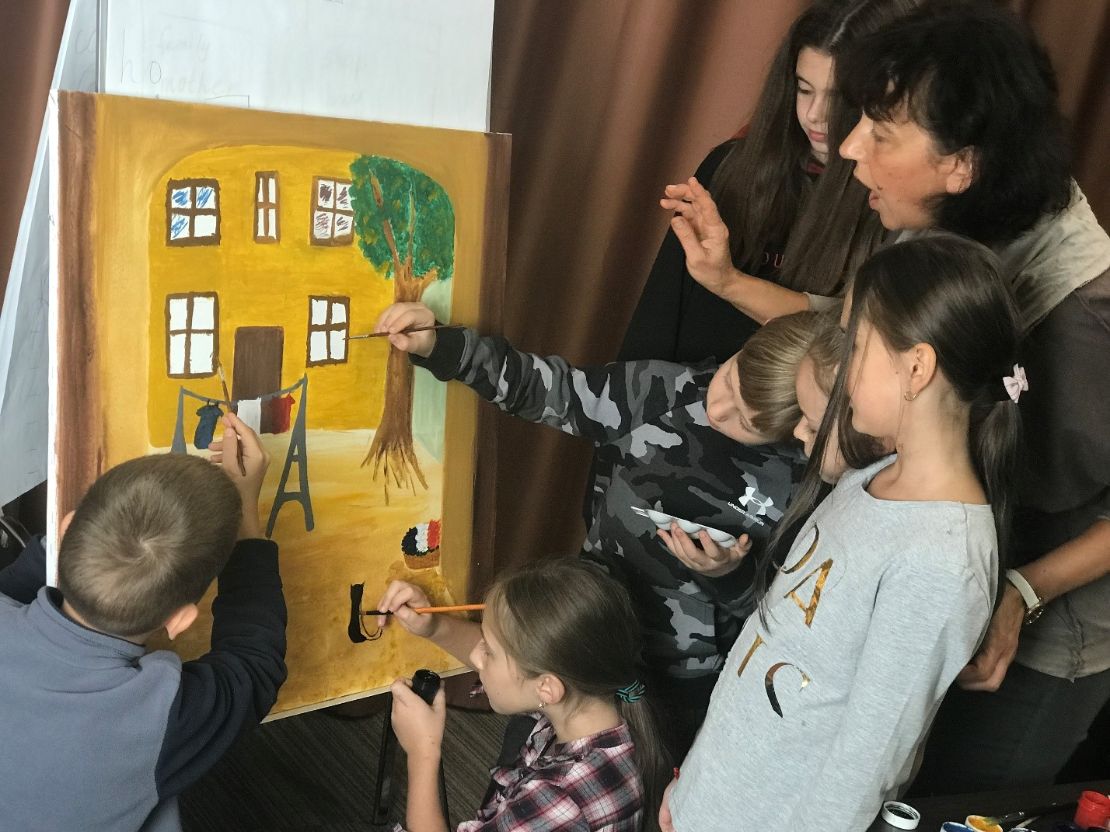
Course No.5 ARCHITECTURE AND DESIGN, focuses on functional fusion of two arts - exterior and interior design - architecture and design.
Architecture as an art form lies at the junction of art and science proper. It is impossible to become an architect without knowing physics, chemistry and mathematics (especially geometry), but it is also necessary to have an aesthetic sense, the ability to see, feel, understand and create beauty, the ability to grasp the beauty in surrounding objects and phenomena.
The specifics of architecture as an art form:
- The dual unity of architecture as a synthesis of the material and artistic sides, because it performs in people's lives not only an aesthetic function, but also a practical one.
- Architecture as a form of art is static, spatial, one cannot see the interior and exterior of the building at the same time.
- Architectural buildings have two "artistic dimensions" - internal (interior) and external (exterior). Their images are connected by a common logic.
- Architecture tends to be ensemble. Its buildings skillfully fit into the rural or urban landscape.
- Architecture does not depict reality, but expresses some abstract ideas.
- It is closely connected with the social environment, brightly and convexly reflects the era and at the same time creates its style.
Design as a creative process can be divided into:
- artistic design - the creation of the material world purely from the point of view of the aesthetics of perception (external manifestations of form);
- technical aesthetics - the science of design, taking into account all aspects, and above all constructiveness, functionality, comfort of production, operation, disposal of a technical product, etc.
The project implementation of the course will be the creation of design elements that will indescribably please students!
All LEONARDO courses take the student step by step to new levels of creative vision and thinking.

